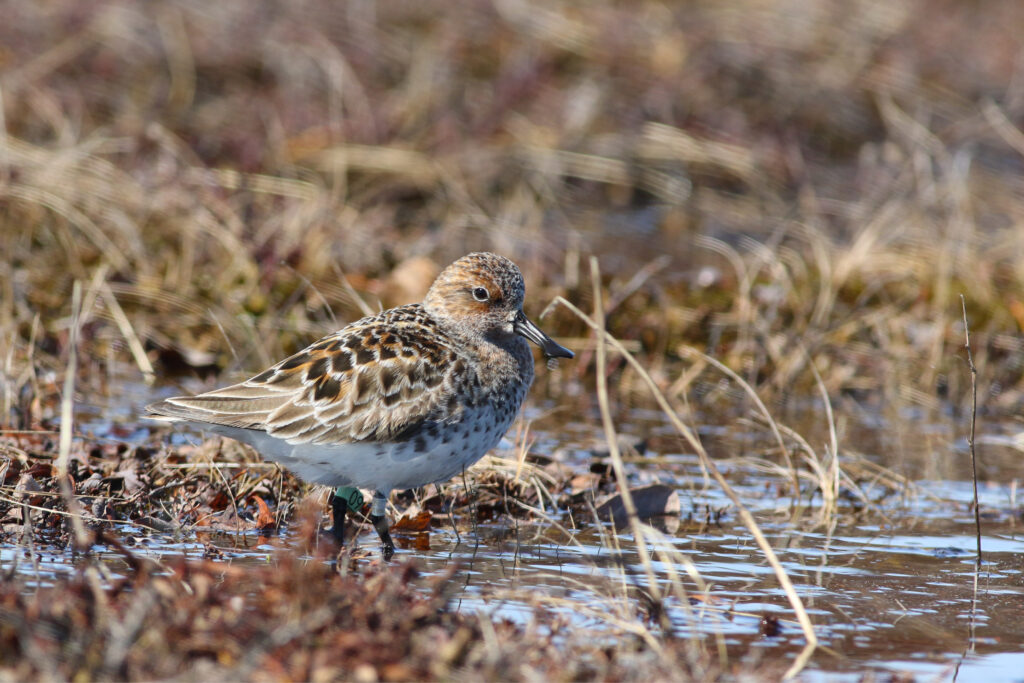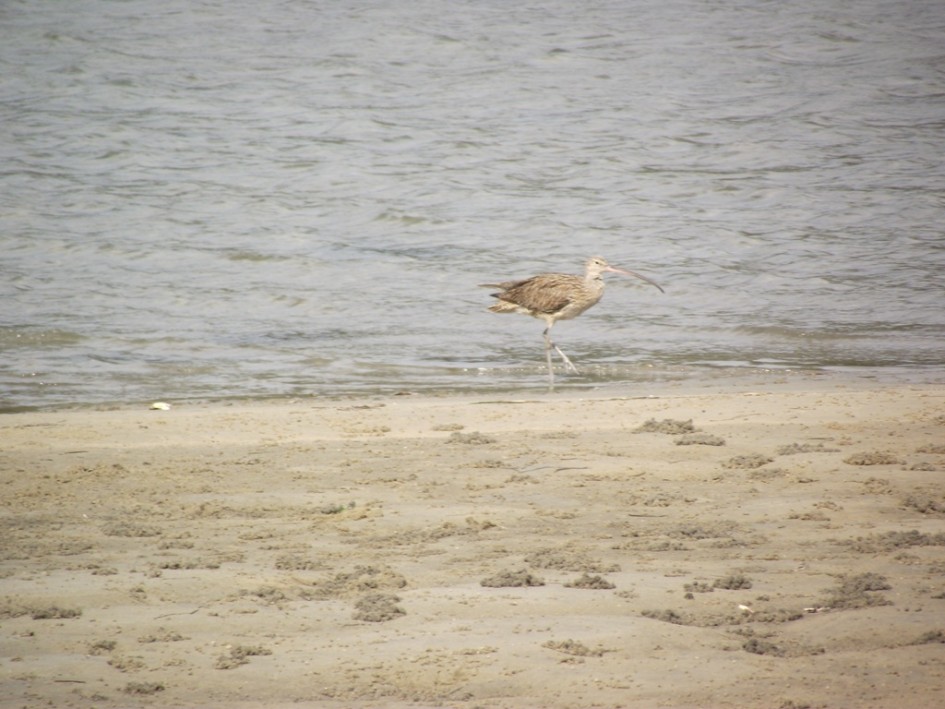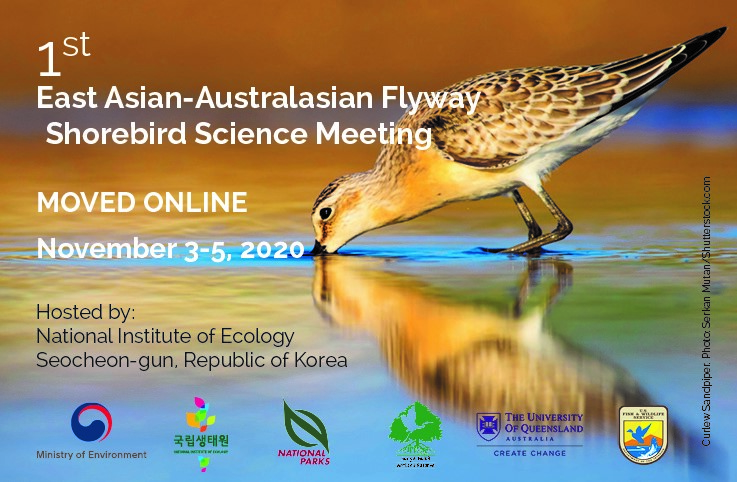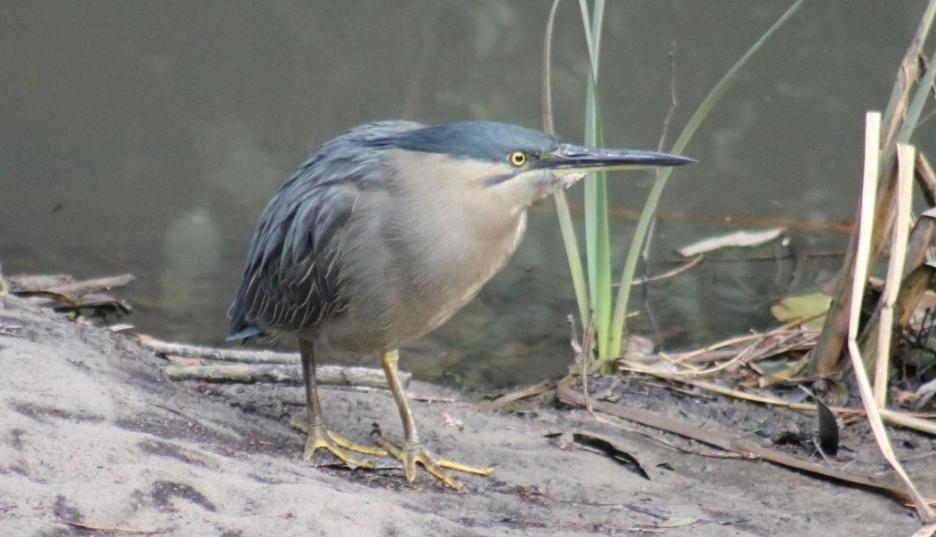June 14 - 20, 2020: Issue 454
Two New Studies Find Shrinking Tidal Flats And Hunting Threaten The East Asian-Australasian Flyway
Study On Shorebirds Suggests That When Conserving Species, Not All Land Is Equal
June 10, 2020
Researchers may have solved the long-standing puzzle of why migratory shorebirds around the world are plummeting several times faster than coastal ecosystems are being developed. They discovered that shorebirds overwhelmingly rely on tidal zones closest to dry land, which are most often lost to development. The findings suggest that protecting species requires a detailed understanding of how animals interact with the landscape so that preserved habitats best serve endangered species' needs.
Princeton University researchers may have solved a long-standing mystery in conservation that could influence how natural lands are designated for the preservation of endangered species.
Around the world, the migratory shorebirds that are a conspicuous feature of coastal habitats are losing access to the tidal flats -- the areas between dry land and the sea -- they rely on for food as they travel and prepare to breed. But a major puzzle has been that species' populations are plummeting several times faster than the rate at which coastal ecosystems are lost to development.
Nowhere is the loss of tidal flats and shorebird species more acute than along the East Asia-Australasian Flyway (EAAF). An estimated 5 million migratory birds from 55 species use the flyway to travel from southern Australia to northern Siberia along the rapidly developing coast of China -- where tidal flats can be more than 6 miles wide -- at which birds stop to rest and refuel.
Since the 1980s, the loss of tidal flats around the Yellow Sea has averaged 1.2% per year. Yet, the annual loss of the most endangered bird species has averaged between 5.1 and 7.5%, with populations of species such as the critically endangered spoon-billed sandpipers (Calidris pygmaea) climbing as high as 26% each year.

The critically endangered spoon-billed sandpiper Calidris pygmaea - Photo by Tong Mu, Department of Ecology and Evolutionary Biology)
In exploring this disparity, Princeton researchers Tong Mu and David Wilcove found a possible answer -- the birds don't use all parts of the tidal flat equally. They discovered that migratory shorebirds overwhelmingly rely on the upper tidal flats closest to dry land, which are the exact locations most often lost to development.
They report in the journal Proceedings of the Royal Society B that China's upper tidal flats provided more than 70% of the cumulative foraging time for the species they studied at two Yellow Sea sites along the EAAF. The middle and lower flats that birds are increasingly pushed toward by human activity were less frequently foraged upon due to the tide cycle, which may be impacting species health and breeding success.
The findings stress the need for integrating upper tidal flats into conservation plans focused on migratory shorebirds, the authors reported.
"This is a new insight into Asian shorebirds, but I suspect that the upper intertidal is disproportionately important to shorebirds in other places, too, such as the East and West coasts of North America," said Wilcove, who is a professor of ecology and evolutionary biology and public affairs and the Princeton Environmental Institute (PEI).
"People start at the upper zone and work their way outward, so the best spots for the birds are the first to go," he said. "It would probably be best to extend current developments farther into the intertidal zone rather than keep building parallel to the coast, which consumes more of the upper intertidal.
"Think of it as advocating for a rectangle with the long side pointing into the sea versus a rectangle with the long side hugging the shore," Wilcove said.
The study results also suggest that protecting species and their habitats may mean more than designating land for wildlife -- it may require identifying the right land to set aside by gaining a detailed understanding of exactly how animals interact with the landscape.
"Recognising the importance of a kind of habitat to specific species or groups of species takes time, effort and thought," said Mu, who is the paper's first author and a Ph.D. candidate in ecology and evolutionary biology.
"Sometimes we just don't know what to look for, or looking requires challenging some prevalent and maybe false perceptions," he said. "But the situation is getting better and better. People are paying more attention to environmental issues, and the advances in technology are helping us gain more and newer insight into these questions."
Mu conducted fieldwork between September 2016 and May 2017 at two well-known stopover sites -- one outside of Beijing, the other near Shanghai -- for migratory shorebirds in the Yellow Sea region. He focused on 17 species of birds, noting where along the tidal flat the animals preferred to feed.
A key difference to his approach, Mu said, is that most previous research focused on the low-tide period when all the tidal flats are exposed and the full range of intertidal species can be observed.
"It makes sense from an ecological point of view. During the high tides when only a portion of the tidal flats is accessible, the relationship usually still holds for the exposed area," Mu said. "So, there's little incentive to look at the periods other than low tide when researchers can get a more complete picture."
What Mu thinks was missed, however, was that the upper tidal flats provide the most amount of foraging time for birds that have places to be. Even if the lower half of a 6-mile wide mudflat is set aside for migratory birds, they're not getting the energy they need for the trip ahead during the high tide, he said.
"The value of the tidal flats comes from not only their size, but also how much foraging time they can provide," Mu said. "The upper tidal area is exposed for a longer period during tidal cycles, compared to the middle and lower areas, which I think permits shorebirds to forage for a longer time and thus get more energy."
The preservation of shorebirds should be driven by how integral the animals are to the health of intertidal zones, Mu and Wilcove said. In turn, tidal flats are not only vital to other marine life, but also provide people with seafood such as clams and crabs and protection from storms and storm surges that cause coastal flooding.
"Shorebirds facilitate the energy and nutrient exchanges between land and sea," Mu said. "Because a lot of them are long-distance migrants, they also facilitate the energy and nutrient exchanges across different ecosystems and continents, something that is usually overlooked and underappreciated."
Wilcove and Mu cited recent research showing that more than 15%, or more than 12,000 square miles, of the world's natural tidal flats were lost between 1984-2016.
"Some of the greatest travellers on Earth are the shorebirds that migrate from Siberia to Southeast Asia and Australia," Wilcove said. "Now, they're declining in response to the loss of the tidal areas, and the full range of benefits those tidal flats provide are in some way being diminished."
Tong Mu, David S. Wilcove. Upper tidal flats are disproportionately important for the conservation of migratory shorebirds. Proceedings of the Royal Society B: Biological Sciences, 2020; 287 (1928): 20200278 DOI: 10.1098/rspb.2020.0278
Hunting threatens one of the world’s most amazing wildlife migrations
May 21, 2020
As the world looks to tighten up the illegal capture of wildlife, migratory birds are being threatened by widespread and unsustainable hunting across the Asia-Pacific region.
University of Queensland-led research has revealed that three quarters of migratory shorebird species in the region have been hunted since the 1970s.
University of Queensland PhD student Eduardo Gallo-Cajiao said the finding was deeply concerning, as these globetrotters were already under pressure from other human impacts.
“The Asia-Pacific is host to one of the most amazing animal migrations on earth,” Mr Gallo-Cajiao said.
“Every year, hundreds of thousands of shorebirds, wetland-dependent species, breed across the Arctic and boreal regions, moving south to Southeast Asia, Australia, and New Zealand along a migration corridor known as the East Asian-Australasian Flyway.
“The Flyway spans 22 countries, through which 61 species of shorebirds complete their epic annual migrations some covering up to 25,000 km each year.
“But many of these fascinating birds are unfortunately declining, with several on the brink of extinction.
“Until now, habitat loss due to the expansion of coastal infrastructure had been identified as one of the main causes of their declines, particularly around the Yellow Sea region of China and the Korean peninsula, where many birds stop to rest and feed on their migrations.
“The scale and significance of hunting was unknown prior to this study, and it’s clear that it’s likely contributed to declines of migratory shorebirds in this region.”
The team worked for four years assembling all available evidence on hunting – analysing hunting records from 14 countries, involving 46 species.
But there are knowledge gaps, as they could not find data for eight countries.
Currently, there are five shorebird species at high risk of extinction in this region, including the critically endangered spoon-billed sandpiper, of which fewer than 500 remain.
“Our study discovered that other threatened species that have been subject to hunting include the great knot, far eastern curlew, and spotted greenshank,” Mr Gallo-Cajiao said.
UQ’s Professor Richard Fuller said managing hunting was complicated by the broad range of people involved, from recreational hunters to subsistence hunters and commercial traders.
“At least some hunting is driven by issues of food security, so sustainable development must be considered when developing alternatives for management,” Professor Fuller said.
“There’s no coordinated monitoring of how many shorebirds are taken annually across the region, which makes management really hard.
“Internationally coordinated approaches to address hunting are now underway, including through the UN Convention on Migratory Species, but these efforts need to be drastically ramped up to avoid extinctions and maintain healthy wildlife populations.
“Additional ground surveys and an international coordinated monitoring strategy are also urgently needed.”
The research, 'Extent and potential impact of hunting on migratory shorebirds in the Asia-Pacific' has been published in Biological Conservation (DOI: 10.1016/j.biocon.2020.108582) and was a collaboration between 13 institutions across nine countries.

Eastern Curlew, Numenius madagascariensis at Careel Bay foreshore, Spring, 2011 - photo by A J Guesdon.
Also available:
- Conserving unprotected important coastal habitats in the Yellow Sea: Shorebird occurrence, distribution and food resources at Lianyungang. Global Ecology and Conservation. Volume 20, October 2019, e00724. https://doi.org/10.1016/j.gecco.2019.e00724
- Bamford M, Watkins D, Bancroft W, Tischler G and J Wahl. 2008. Migratory Shorebirds of the East Asian - Australasian Flyway; Population Estimates and Internationally Important Sites. Wetlands International - Oceania. Canberra, Australia. PDF available
World Migratory Bird Day
World Migratory Bird Day (WMBD) was initiated in 2006 as an annual awareness-raising campaign aimed at people living in all the major flyways that highlights the ecological importance of migratory birds and calls for their global conservation through international cooperation. It was established by the Secretariat of the Agreement on the Conservation of African-Eurasian Migratory Waterbirds (UNEP-AEWA) in collaboration with the Secretariat of the Convention on the Conservation of Migratory Species of Wild Animals (CMS).In October 2017, CMS, and AEWA announced an innovative partnership that Environment for the Americas (EFTA) joined and combining International Migratory Bird Day (IMBD) to WMBD. WMBD is now celebrated twice a year, on the Second Saturday in May and in October. In 2020, WMBD will be held on 9 May and 10 October.This year the theme of World Migratory Bird Day is “Birds Connect Our World” and was chosen to highlight the importance of conserving and restoring the ecological connectivity and integrity of ecosystems that support the natural movements of migratory birds and that are essential for their survival and well-being.
Ecological Connectivity and its importance
Connectivity is essential for migratory species, and important for a wide variety of ecological functions. It describes the natural and necessary movement of species and the flow of natural processes that sustain life on Earth. With 1 million species facing the risk of extinction within our generation, connectivity has become a central topic for biodiversity and sustainability. Migratory species move across the globe, running, swimming, or in the case of birds flying, connecting countries, people and continents through their migration routes. This migration can only be accomplished when animals are able to access the different sites and habitats that they rely upon along their pathways. These pathways transcend national borders, national plans and conservation priorities of any single country. Migratory birds connect countries and their conservation requires cooperation between countries and across national boundaries.
Connectivity and Birds
The flyways used by migratory birds connect different habitats. Often, these long-haul flight paths cross inhospitable terrain, such as deserts and open seas. Suitable habitats for wintering, as stop-over,staging and breeding sites are crucial for the survival of these birds. The ecological connectivity of these sites is important to the survival of migratory birds, but this it is being threatened by habitat loss and degradation. The loss or degradation of a critical stop-over site for migratory birds can have a devastating effect on the survival chances of migratory birds and lead to a defragmentation that can have a devastating effect on populations. Other threats, such as poisoning, unsustainable use, collisions with man-made objects and climate change are also having a negative impact on migratory birds around the world.

The 1st East Asian-Australasian Flyway Shorebird Science Meeting is switching from face-to-face to an online virtual meeting to be held on 3-5 November 2020. This will enable participants from around the flyway and across the world to contribute even during this period of restricted travel because of the COVID-19 pandemic. Applications for travel awards will be cancelled consequently. Conference registration will open on 1st August 2020, and close on 1st October 2020. Full details for the meeting will be updated on the EAAFSSM website in due course.
If you have any questions or foresee any difficulty in attending the conference online, please contact Professor Richard Fuller, University of Queensland EAAFSSM Science Committee Chair (r.fuller@uq.edu.au).
Visit: www.eaaflyway.net

Mangrove or Striated Heron Butorides striata - Careel Creek - photo by A J Guesdon